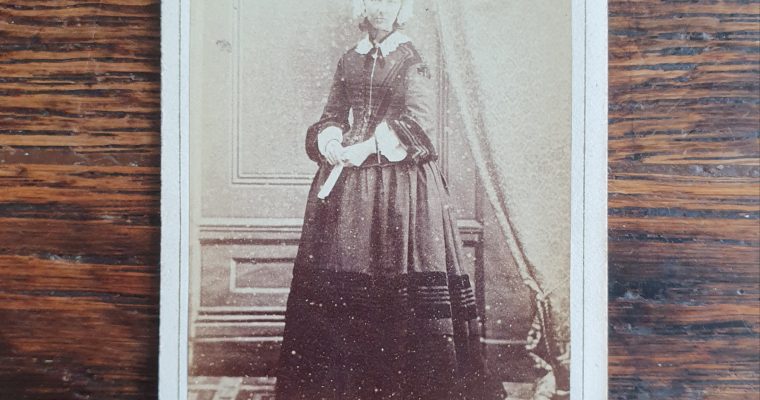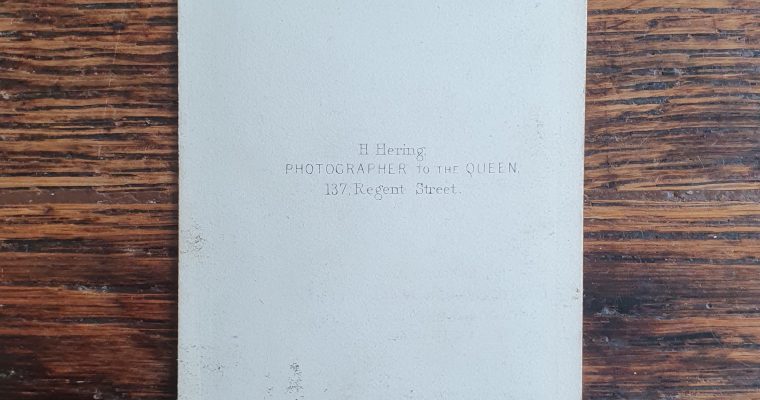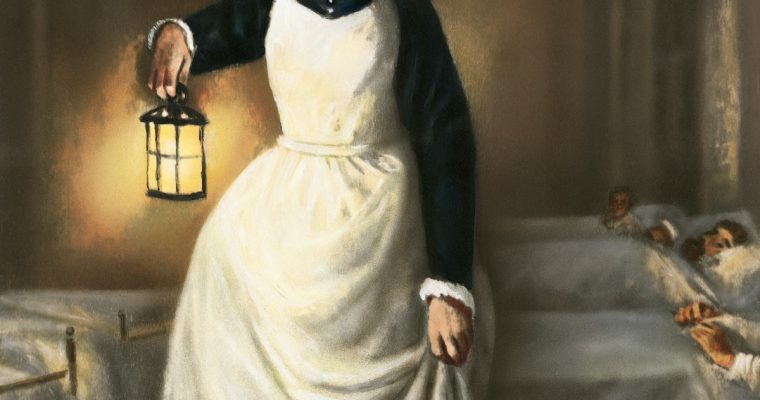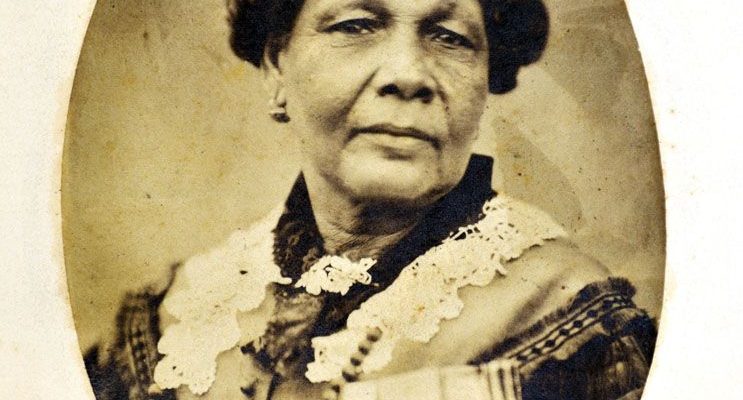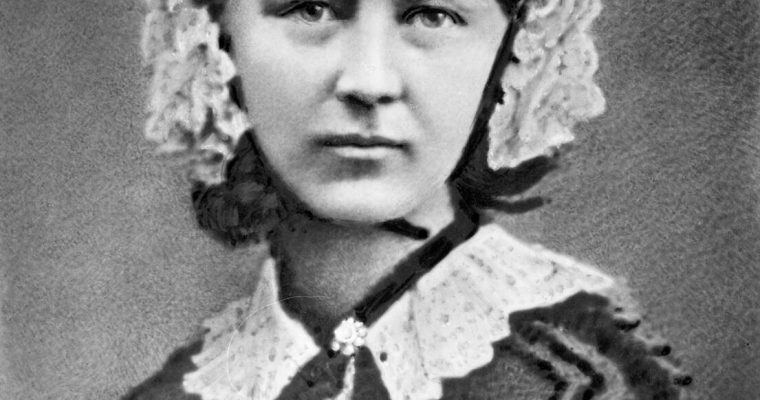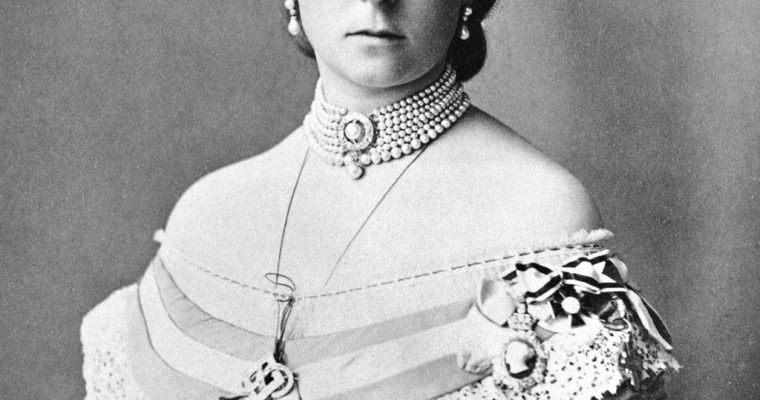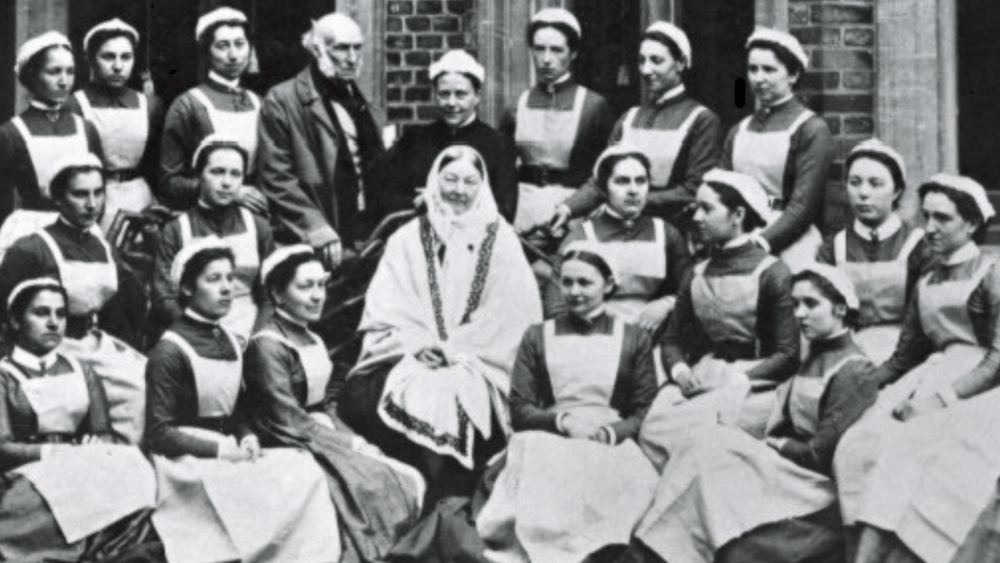Florence Nightingale CDV (1858)
FLORENCE NIGHTINGALE CDV (1858)
This is a carte de visite (CDV) of “The Lady With the Lamp”, Florence Nightingale. I was lucky enough to acquire this original photograph just a couple of weeks ago and am proud to own this little piece of history. Florence Nightingale (1820-1910), was a British social reformer, statistician and best known as the founder of modern nursing. This particular photo of Nightingale was taken by H. Hering in his studio at 137 Regent Street, London in 1858, when Florence was 38 years old. This was just 2 years after the Crimean War ended, in which Nightingale played such an instrumental part.
H. Hering, photographed many people, his sitters included politicians, musicians and royals, including Nightingale’s friend, Princess Alice. I feel that every photograph ever taken of a person holds an immense power. It captures a human life for the rest of time in just a few inches of paper, and this one of Nightingale is no exception. She wears an expression of determination on her face, someone who’s seen war and can do what needs to be done, meanwhile holding herself gently and elegantly, giving the unmistakeable air of a person who cares.
Florence Nightingale was born on May 12, 1820, in Florence, Italy to Frances Nightingale and William Shore Nightingale. She was the younger of two children and Nightingale’s affluent British family belonged to elite social circles. Florence herself was reportedly awkward in social situations, shy and avoided being the centre of attention whenever possible. Florence was raised on the family estate at Lea Hurst, Derbyshire where her father provided her with a classical education, including studies in German, French and Italian. From a very young age, Florence Nightingale was active in tending the ill and poor people in the village neighbouring her family’s estate. By the time she was 16 years old, it was clear to her that nursing was her calling.
Nightingale’s parents forbade her to pursue nursing however, as during the Victorian Era, a young lady of her social stature was expected to marry a man and not take up a job that was viewed as lowly menial labour by the upper social classes. When Nightingale was 17 years old, she refused a marriage proposal from a “suitable” gentleman, Richard Monckton Milnes. Nightingale explained that while he stimulated her intellectually and romantically, her “moral…active nature…requires satisfaction, and I would not find it in this life.” In 1844, Nightingale defied her parents and enrolled as a nursing student at the Lutheran Hospital in Kaiserwerth, Germany.
In the early 1850s, Nightingale returned to London, where she took a nursing job in a Middlesex hospital for sick governesses. Her performance impressed her employer so much that she was promoted to superintendent within just a year of being hired. The position proved challenging as Nightingale had to fight a cholera outbreak and unsanitary conditions which actually encouraged the spread of the disease. Nightingale made it her mission to improve hygiene practices, significantly lowering the death rate at the hospital in the process. The hard work took a toll on her health. She had just barely recovered when the biggest challenge of her nursing career presented itself.
In October of 1853, the Crimean War broke out. The British Empire was at war against the Russian Empire for control of the Ottoman Empire. By 1854, 18,000 soldiers had been admitted into military hospitals. At the time, there were no female nurses stationed at hospitals in the Crimea. England was in an uproar about the neglect of their ill and injured soldiers, who not only lacked sufficient medical attention due to hospitals being horribly understaffed, but also languished in appallingly unsanitary and inhumane conditions. In late 1854, Nightingale received a letter from Secretary of War Sidney Herbert, asking her to organize a corps of nurses to tend to the sick and fallen soldiers in the Crimea. She quickly assembled a team of 34 nurses from a variety of religious orders and sailed with them to the Crimea just a few days later.
Although they had been warned of the horrid conditions there, nothing could have prepared them for what they saw when they arrived at Scutari, the British hospital in Constantinople. The hospital sat on top of a large cesspool which contaminated the hospital’s water. Patients lay in their own excrement on stretchers strewn throughout the hallways while rodents and bugs scurried past them. Basic supplies, such as bandages and soap, grew increasingly scarce as the number of ill and wounded steadily increased. Even water needed to be rationed. More soldiers were dying from infectious diseases like typhoid and cholera than from injuries incurred in battle.
No-nonsense Nightingale quickly set to work. She procured hundreds of scrubbing brushes and asked any able patients to scrub the inside of the hospital from top to bottom while Nightingale herself spent every waking minute caring for the soldiers. In the evenings she moved through the dark hallways carrying a lamp while making her rounds, ministering to patient after patient. The soldiers, who were both moved and comforted by her endless supply of compassion, took to calling her “The Lady with the Lamp.” Others simply called her “The Angel of the Crimea.” Her work reduced the hospital’s death rate by two-thirds.
Importantly, another heroine was working hard not very far away from Nightingale’s hospital. Mary Jane Seacole (1805 – 1881) was a British-Jamaican nurse and businesswoman who felt she could put her skills to use helping the wounded in the Crimea. Mary travelled to England and approached the British War Office, asking to be sent as an army nurse after she heard about the poor medical facilities for wounded soldiers but she was refused because of the colour of her skin.
Undaunted, she funded her own trip to Crimea, where she established the British Hotel with Thomas Day, a relative of her husband, Edwin. The hotel provided a place of respite for sick and recovering soldiers. Mary was incredible at her job and at the time, Mary was as well-known in Britain as Florence Nightingale. Mary’s hotel was very close to the front line enabling her to visit the battlefield, sometimes even under fire, to nurse the wounded. She nursed sick soldiers so kindly that they called her ‘Mother Seacole’. Now almost forgotten, Mary Seacole deserves just as much credit as Florence Nightingale for her work during the Crimean war.
In addition to vastly improving the sanitary conditions of the hospital, Nightingale created a number of patient services that contributed to improving the quality of their stay. She instituted the creation of an “invalid’s kitchen” where appealing food for patients with special dietary requirements was cooked. She established a laundry so that patients would have clean linens. She also created a classroom and a library for patients’ intellectual stimulation and entertainment. Based on her observations in the Crimea, Nightingale wrote Notes on Matters Affecting the Health, Efficiency and Hospital Administration of the British Army. The 830-page report analysed her experience and proposed reforms for other military hospitals. The book would spark a total restructuring of the War Office’s administrative department. With the support of Queen Victoria, Nightingale also helped establish the Royal Commission for the Health of the Army in 1857.
Nightingale remained at Scutari for a year and a half. She left in the summer of 1856, once the Crimean conflict was resolved, and returned to her childhood home in Derbyshire. To her surprise she was met with a hero’s welcome, which the humble nurse did her best to avoid. The Queen rewarded Nightingale’s work by presenting her with an engraved brooch that came to be known as the “Nightingale Jewel” and grated her a prize of $250,000 from the British government.
The Royal Commission into the Health of the Army employed leading statisticians of the day to analyse army mortality data from the Crimean war and they found that 16,000 of the 18,000 deaths were from preventable diseases, not battle. But it was Nightingale’s ability to translate this data into a new visual format that really caused a sensation. The “Nightingale Rose Diagram,” showed how the Sanitary Commission’s work decreased the death rate. She made the complicated data accessible to everyone, inspiring new standards in the army and beyond. She became the first female member of the Royal Statistical Society and was named an honorary member of the American Statistical Association.
Nightingale decided to use the money to further her cause. In 1860, she funded the establishment of St. Thomas’ Hospital, and within it, the Nightingale Training School for Nurses. Nightingale became a figure of public admiration. Poems, songs and plays were written in her honour. Young women aspired to be like her and even women from the wealthy upper classes started enrolling at the training school. Thanks to Nightingale, nursing was no longer frowned upon by the upper classes and it was now viewed as an honourable vocation.
It was at this point in her life she met Princess Alice of the United Kingdom. Alice was born in 1843 at Buckingham Palace, the third child and second daughter of Queen Victoria and Prince Albert. Princess Alice married the German Prince, Louis of Hesse in 1962 and when Hesse became involved in the Austro-Prussian War, the heavily pregnant Alice devoted a lot of her time to the management of field hospitals. She also noted that the care conditions for wounded soldiers was very poor and founded the organisation, the Princess Alice Women’s Guild or ‘Alice-Frauenverein’, the aim of which was to train nurses. They quickly took over much of the day-to-day running of the state’s military hospitals due to their success. It was there she became friends with Florence Nightingale and the two worked together, advocating for advancements in healthcare.
During the Crimean war, Nightingale had contracted “Crimean fever” and never fully recovered. Just after my carte de visite photograph was taken, she became homebound and bedridden, aged just 38. Fiercely determined and dedicated as ever, Nightingale continued to work from her bed. Residing in Mayfair, she remained an authority and advocate of health care reform, interviewing politicians and welcoming distinguished visitors from her bed. In 1859, she published Notes on Hospitals, which focused on how to properly run civilian hospitals. Throughout the U.S. Civil War, she was frequently consulted about how to best manage their field hospitals. Nightingale also served as an authority on public sanitation issues in India for both the military and civilians. Her work and ideas reformed, not just Britain, but the world.
In August 1910, Florence Nightingale fell ill, but seemed to recover and was reportedly in good spirits. A week later, on the evening of Friday 12th, she developed an array of troubling symptoms and died unexpectedly at 2pm the following day, Saturday 13th, at her home in London. Characteristically, she had expressed the desire that her funeral be a quiet and modest affair, despite the public’s desire to honour her. Respecting her last wishes, her relatives turned down a national funeral. The Lady with the Lamp was laid to rest in Hampshire, England. To this day, Florence Nightingale is broadly acknowledged and rightly revered as the compassionate pioneer of modern nursing.
Credit to www.history.com for education me about Florence Nightingale and informing her part of this blog post.
I know that was a lot, but if you’d like to read my blog on Princess Alice and the CDV I have of her, it can be found here:
https://samuel-thomas.com/princess-alice-of-the-united-kingdom-1843-1878-cdv/

